Press Kit Links
Visit the NASA Mars 2020 Perseverance Landing Press Kit
Visit the JPL Photojournal page featuring Mastcam-Z
Learn more about the Mars Helicopter
For media and press inquiries specifically for Mastcam-Z, contact:
Karin Valentine
Media Relations Manager
Arizona State University
School of Earth and Space Exploration
Karin.Valentine@asu.edu
480-965-9345
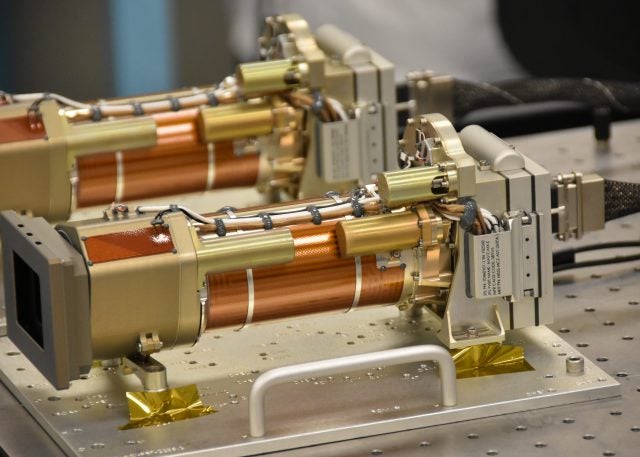
In the foreground is the flight Mastcam-Z camera that will be the "right eye" of the rover. The "left eye" (identical from the outside, but with different color filters inside) is in the background. Each camera is about the size of a typical tennis ball canister.
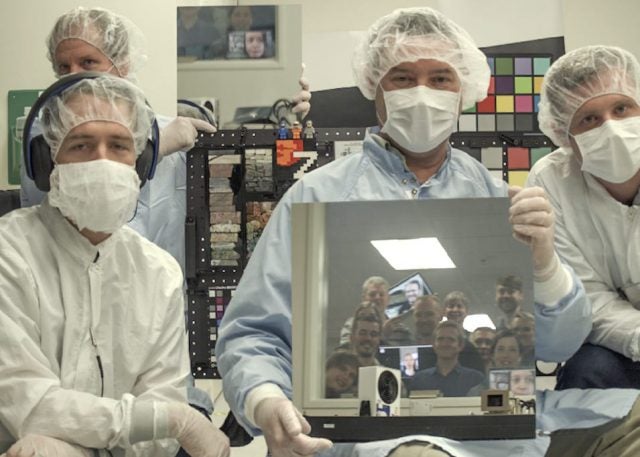
A photo taken by one of the flight cameras shows, left to right: Andy Winhold, Justin Maki, Jim Bell and Alex Hayes. Bell is holding a mirror reflecting the faces of additional team members looking into the cleanroom window from the data analysis room outside.
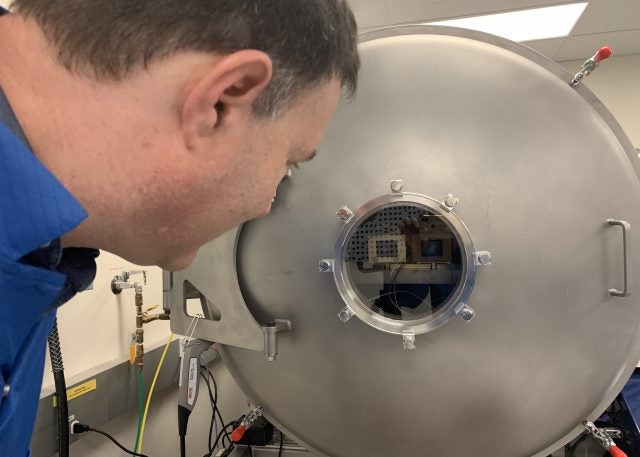
Principal Investigator Jim Bell looking into the vacuum chamber at Malin Space Science Systems, where the flight cameras were tested. The front surfaces of both cameras are visible behind the vacuum chamber window.
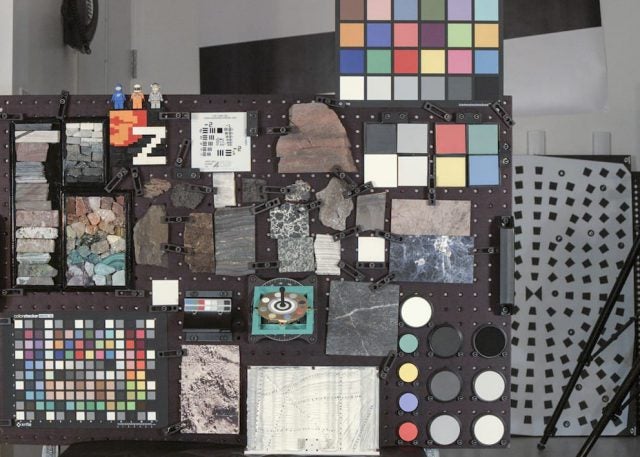
A wide-angle RGB photo of the "GeoBoard" (color calibration targets, geometric calibration targets, and natural geologic samples with lots of color and texture, all designed to put the color and resolution capabilities of the cameras to the test) taken by the Mastcam-Z flight left camera at the 34 mm zoom setting. This target is about as far away from the cameras as typical outcrop rocks might be on Mars, giving an idea of the image quality and field of view that will be available.
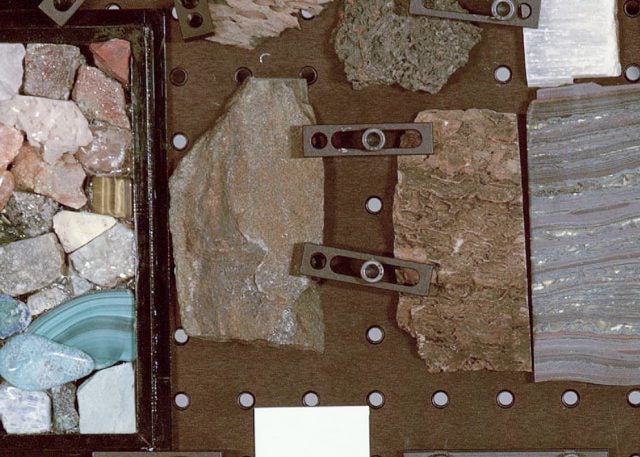
A high-resolution RGB of one part of the "GeoBoard" taken by the Mastcam-Z flight right camera at the 100 mm zoom setting. This provides an example of the expected image quality for nearby rocks, soils, layers, and outcrops on Mars near our highest zoom resolution.
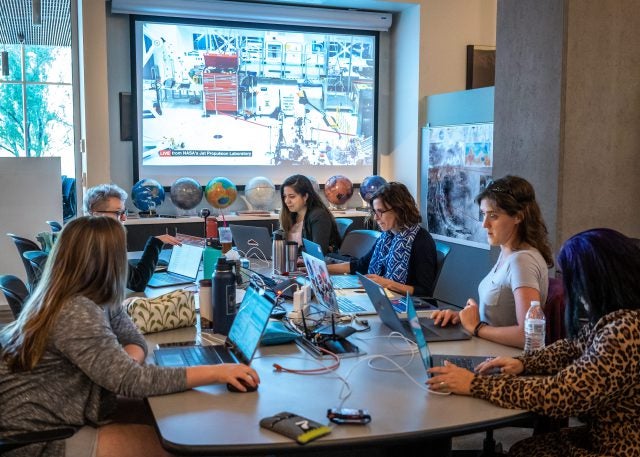
Mars 2020 Mastcam-Z Downlink Operations Lead Kristen Paris with Laura Mehall (Data Archivist) and Payload Downlink Leads Corrine Rojas, Kelsie Crawford, and Rachel Roberts participating remotely in calibration testing of the cameras on the ASU Tempe Campus.
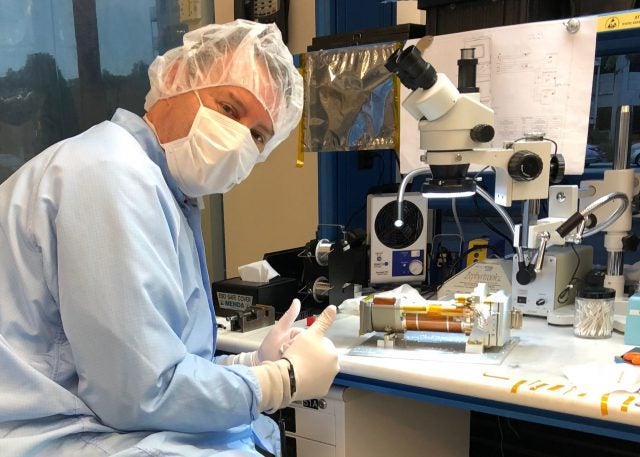
Mastcam-Z principal investigator Jim Bell in the cleanroom at Malin Space Science Systems in San Diego in October 2018 with the “Flight Model 1” Mastcam-Z. This camera is the right “eye” of the stereo pair of Mastcam-Z cameras mounted on the Perseverance rover’s Remote Sensing Mast.
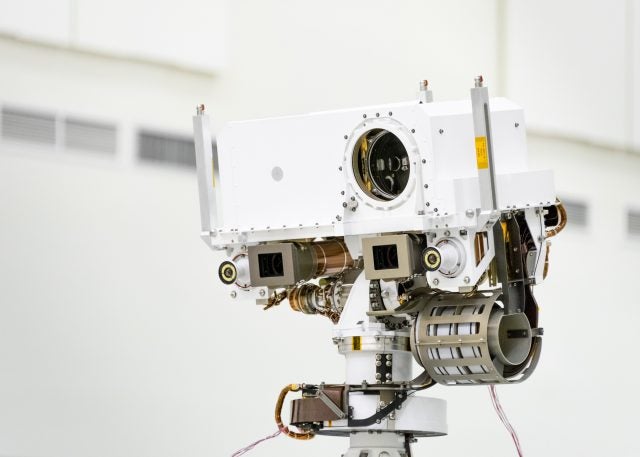
This image, taken in the Spacecraft Assembly Facility's High Bay 1 at the Jet Propulsion Laboratory in Pasadena, California, on July 23, 2019, shows a close-up of the head of Mars 2020's remote sensing mast. The mast head contains the SuperCam instrument (its lens is in the large circular opening). In the gray boxes beneath mast head are the two Mastcam-Z imagers. On the exterior sides of those imagers are the rover's two navigation cameras.